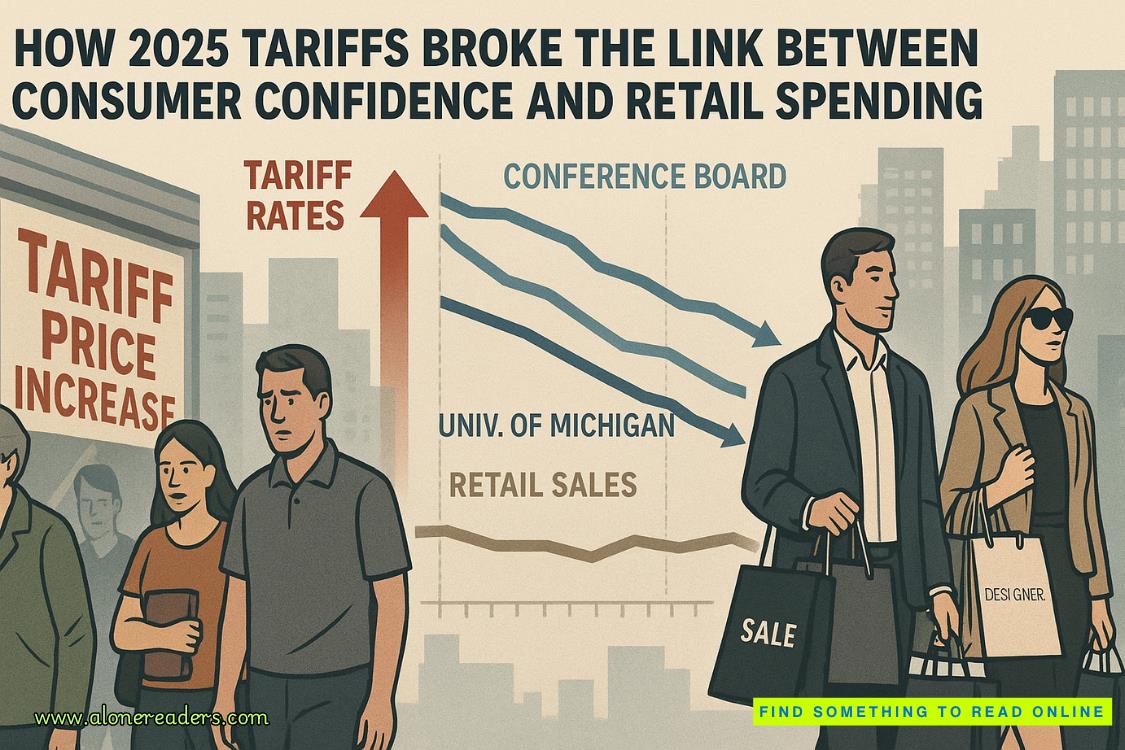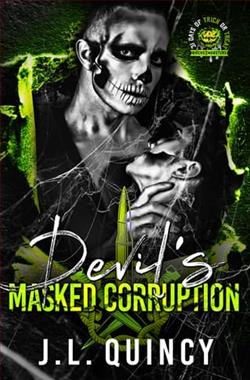Page 13 of The Furies
CHAPTER XIII
Detectives Condell and Gardner had hit a dead end with the Edwin Ellerkamp case. Whoever was responsible for his death was either very accomplished or very lucky, because they had retrieved no fingerprints or DNA from the scene, or none that should not have been there; the blood on the mirror was Ellerkamp’s own, and had been applied by someone wearing gloves. The detectives had tried to trace calls made to, and received from, a pair of unidentified numbers on Ellerkamp’s cell phone, but so far all that could be determined was that the numbers had been generated by an anonymizer app that rerouted calls to another device. Such apps were used by people selling goods on the Internet who preferred to keep a buffer between themselves and potential buyers, as well as those who were dating online or off.
Oh, and by criminals, because they really did value their privacy.
The next step would usually have been to obtain a warrant in order to force the creators of the app to reveal whatever details they might have possessed about the ultimate source or destination of those calls, except the app had been tracked to the dark net, which meant that a) any order, even if obtainable, would be unenforceable in practical terms; and b) the communications between Ellerkamp and the holder or holders of those numbers almost certainly involved some degree of illegality, because otherwise such levels of concealment would have been unnecessary.
Since the discovery of the body, Condell and Gardner had become more knowledgeable than either of them might have desired about the thriving market in illicitly acquired coins, whether stolen from collectors, stores, and museums, or dug up by treasure hunters and not reported to the relevant authorities. Increasingly, they were coming around to the view that Edwin Ellerkamp might have cheated someone in a coin transaction, or involved himself in the purchase of stolen property, and been killed for doing so. His collection was in the process of being catalogued and appraised, but at least some of the items appeared to have no paperwork to indicate their source or manner of acquisition. In addition, it continued to strike Condell as odd that so much of value had been left untouched in the house. What kind of individual would be so obsessed with coins as potentially to kill a man over them yet not steal his trove? Someone, Condell thought, with a peculiar sense of honor, if nothing else.
And then there was the matter of the marking on the mirror. As far as anyone could tell, it was a variation on the occult symbol for “bane,” meaning something evil or destructive; that, or the killer couldn’t even draw a stick figure properly. Condell would have liked to write it off as the latter, but increasingly he was leaning toward the former, which didn’t please him one bit. Bad enough that an old man should have been forced to choke on what had been identified as Anglo-Saxon silver sceattas dating from the seventh and eighth centuries, with some Greek silver drachms from before the time of Christ thrown in for variety. The addition of an occult element only complicated proceedings further.
Thankfully they had managed to keep a lid on the precise manner of Ellerkamp’s death for a few days, although it had since entered the public domain in the form of a couple of newspaper reports. Too many people knew of what had happened for it not to have leaked eventually, and the coin aspect had subsequently been confirmed by the police. The presence of the symbol on the mirror, though, was being kept under wraps; for now, no benefit could accrue to the investigation from circulating it widely.
One other fact about Ellerkamp’s murder was being kept on a need-to-know basis. In the course of the autopsy, coins were not the only items removed from his throat and stomach. The medical examiner had also retrieved a pair of old dice, their sides misspotted: the first die was marked only with ones, twos, and threes, the second with fours, fives, and sixes. The latter, Condell had learned, was known as a “high man,” the former a “low man,” and they might once have been used to bilk rubes in games of chance. Radiocarbon dating analysis had established that the dice had been made in the sixteenth century, and a process known as pRIA, or protein radioimmunoassay, had identified the substance used in their creation as human bone. Ellerkamp’s housekeeper had never seen dice in her employer’s collection, and could not recall him ever mentioning them, while none of the books on his shelves dealt with such artifacts. This did not rule out his possible ownership of them, but it was equally plausible that his killer had introduced them into Ellerkamp’s body. It was another peculiarity to add to a growing list.
While murders might have been rare in Athens, they were more prevalent in the rest of the Commonwealth of Pennsylvania, along with wrongdoings of a less extreme but nonetheless vexatious stripe, so Gardner and Condell had more than enough criminality to occupy their working hours. Already they could feel the Ellerkamp case growing cold.
But that bane symbol: as Condell’s mother would have said, it was coming between him and his sleep, because what kind of killer signed his name with a rune? If it was a signature, one possibility was a killer who either had taken lives before, or intended to take more, and wanted to make certain that his handiwork was correctly attributed. The second possibility was a killer who assumed that the fact of the rune’s existence would eventually be made public, and would have meaning for specific individuals, in which case it was meant to be construed as a warning, or some form of confirmation. So far, though, searches of state and federal databases, including the FBI’s National Crime Information Center, had drawn blanks. Oh, there was no shortage of runes, because anyone who had ever bought a copy of Led Zeppelin IV, or frequented a tattoo parlor, knew what a rune was, and some of those people had gone on to commit crimes, including a number in which runes had played a part. But the bane symbol featured in no crimes, solved or unsolved, with a connection to coins or antiques, and Condell was reluctant to broaden his parameters to include any bored kid who had ever defaced a wall because he’d listened to too much Norwegian black metal. Neither had bone dice produced any matches.
He considered again the story of Valerian, choking to death on molten gold. But Valerian had made the mistake of crossing a ruler. Who had Edwin Ellerkamp crossed? Some fierce, cold prince, some dark king? Condell pushed away the thought. This was no king, no prince. A sadist, yes, but no ordinary one, touched with confidence, even arrogance, for he had marked his work. Those who did that wanted to be caught, or had no fear of it. The fact that Ellerkamp’s killer had left no evidence of his presence in the house beyond a body and a rune suggested the latter.
For the present, Condell and Gardner would continue their canvass of coin dealers and collectors—and in person, where possible, because Condell was skilled at picking up on a lie. Someone in that community knew why the rune had been left on a mirror in Ellerkamp’s house, which meant they also had an idea of who might have put it there. Of course, the rune could have been designed to throw the police off the scent, but then why not make it easier for them to find? No, Condell was convinced that it had meaning, and he categorized its placement as an error on the part of the killer, even if it was an act that had been weighed and deemed necessary—perhaps, he speculated, by a roll of bone dice. A risk, therefore, but a risk worth taking.
Yet still Condell circled: Why? Why was it important? Why take that chance?
He decided he needed a nap, even though it was not yet noon. But what was a day off for, if not napping on a whim? His wife was at work, while his dogs were already asleep on the floor, and therefore in no position to pass judgment.
As is often the case, an answer to that last “why?” came to him as he explored the terrain between sleeping and waking.
A confirmation of identity.
A warning.
Condell opened his eyes.
The killer had not found what he was looking for at Edwin Ellerkamp’s house.
CHAPTER XIV
Reuben Hapgood rarely opened his premises before 10 a.m., and sometimes not even then. A note on the door invited customers to call a number if the store was closed—which it was from Sunday to Wednesday—but Reuben didn’t always answer his phone either, and picked up messages only at his own convenience. The Internet had transformed his business, just as it had so many others, and now even the store itself might have been regarded as surplus to requirements, given that Reuben had essentially replaced it with a virtual shopfront through which he could display his stock to the world. Despite this, he had so far resisted moving fully online, hesitant to sever himself completely from tradition and family history.
Reuben had inherited his vocation—no, his obsession—from his father, who had opened the store on a back road outside Whitefield, New Hampshire, in 1946, shortly after returning from Europe minus the little finger of his left hand, thanks to a piece of German shrapnel that he later had encased in Lucite and put on display behind the counter. The Lucite block was still there, along with a photograph of Reuben’s grandfather, Farley Hapgood, standing beside an array of coins bearing the mark of Athelstan, first king of England, the picture taken just a few years before Grandpa Farley emigrated from his homeland of Dorset to a new life in the United States. Farley had been an amateur archaeologist, participating in digs across Dorset, Hampshire, Somerset, and Wiltshire, the four modern counties that corresponded to the ancient kingdom of Wessex, and had discovered the Athelstan coins while conducting a solitary search of freshly plowed fields near Bridport. He had excavated two dozen in total, along with pieces of gold wire and a small, near-perfect gold brooch. Farley had set aside just three of the coins for himself, eventually passing them on to his eldest son, who in turn bequeathed them to his only child, Reuben. The latter, being less sentimental than either of his forebears, had duly sold two of the coins, but he wasn’t so avaricious as to part with all of them. The last—bearing the words “Athelstan Rex” on one side surrounding an image of the king, and a cross on the reverse with the name of the maker and mint—Reuben had instructed to be buried with him, in the manner of an ancient warrior carrying some of his wealth into the next world.
Reuben had been married once, but that was long ago, and no children had resulted from the union. He and his ex-wife were no longer in touch, which said much for the depth of their original feelings for each other. No hostility remained between them—in fact, no residual unresolved emotions of any kind. They’d drifted into marriage, then drifted right back out again, like a couple briefly visiting an unsatisfactory Tunnel of Love at a funfair. He’d never bothered marrying again, although he enjoyed the enduring companionship of an obliging lady friend over in Guilford, Vermont, who prized her independence as much as Reuben did his, and would no more have consented to share a roof with him than to have invited rats to colonize her abode. His only surviving relatives, cousins of various removes, were distant and incommunicado. Reuben’s will stipulated that, in the event of his death, his private collection and the contents of his store should be examined by experts from the Smithsonian, who would be permitted to add up to 50 percent of what they liked to their own hoard. The rest was to be sold at auction, and the proceeds shared equally among five named animal welfare charities, Reuben having always preferred the company of cats to people, except where the possibility of making money was concerned.
But Reuben hoped that the day of his passing might yet be remote, because he was only sixty and in good health. His principal vices were wine and fresh sourdough bread, which he felt were modest enough, and perhaps made up for the third, which revealed itself in a certain moral latitude when it came to the acquisition and sale of ancient coins and associated items. Reuben didn’t steal, but he wasn’t above permitting what had been stolen to pass through his hands. He could only hope that, when he died, nothing too illegal might remain on the premises, because he would prefer not to have his reputation for probity posthumously besmirched. Then again, any such items that were discovered would probably be acquired by the Smithsonian anyway, so no harm done—or not much. It wasn’t as if those to whom he’d sold illegally acquired coins had melted them down, although he knew of one collector who’d had Greek and Roman coins set into his bathroom floor, which bothered Reuben somewhat. His customers had taken pleasure in their purchases and cherished them. Better that, in Reuben’s view, than to have them consigned to some museum basement, as the prized items in his own collection were certainly destined to be.
The nature of his customer base was the other reason Reuben elected to maintain his physical store. Certain men—and collectors of coins were predominantly male—still preferred to conduct their transactions in person, and examine prospective acquisitions in a suitable environment, which for them meant being surrounded by coins. In that sense they resembled bibliophiles, and Reuben understood their desire because he shared it. Even when the shutters were down on the store, and the sign was turned to CLOSED, Reuben frequently remained inside, quietly studying, photographing, communicating, negotiating, with music playing low and one of the cats snoozing on a cushion beside him.
But it was now Thursday, and even by Reuben’s tardy and eccentric standards, the store should have been open for at least an hour. The cats crossed the road with him, as they always did, then raced on ahead just in case a rodent or bird might be available for some fun. Reuben entered through the rear door, having first made sure that no suspicious characters were in the vicinity and no unfamiliar vehicles were parked nearby. One couldn’t be too careful, because there was no shortage of junkies and lowlifes who thought a coin dealer represented an easy mark. For this reason Reuben carried a compact little Ruger with him when he walked to the store, and a foot-operated panic button beneath the counter connected directly to the Whitefield PD. Reuben had also elected not to economize when it came to the alarm system, and his own cottage stood directly across the road. If the alarm was activated—and so far any activations had been entirely accidental, thank the Lord—he would be able to see with his own eyes what was happening.
All of which meant that, upon arriving inside, the two cats at his ankles, Reuben was disconcerted to find a man seated in one of the armchairs in the back room. He was dressed in shades of brown, a worn trilby hat on his lap and a pistol that was much bigger than Reuben’s in his right hand. The hand looked swollen, and the fingernails diseased, the ridges raised, the centers sufficiently concave each to have contained, without spilling, a single drop of water. His skin was flaking, and his eyes were rendered milky gray by a film over the iris and pupil, the left almost totally obscured, the right only partially so. If he wasn’t already close to death, Reuben suspected, he soon would be.
“I know you have a gun,” he said to Reuben, “because you’d be a fool not to. Now would be a good time to remove it slowly from your person and lay it on the floor.”
Reuben slipped the Ruger from its belt holster and set it down. One of the cats sniffed at it curiously.
“Lock the door.”















